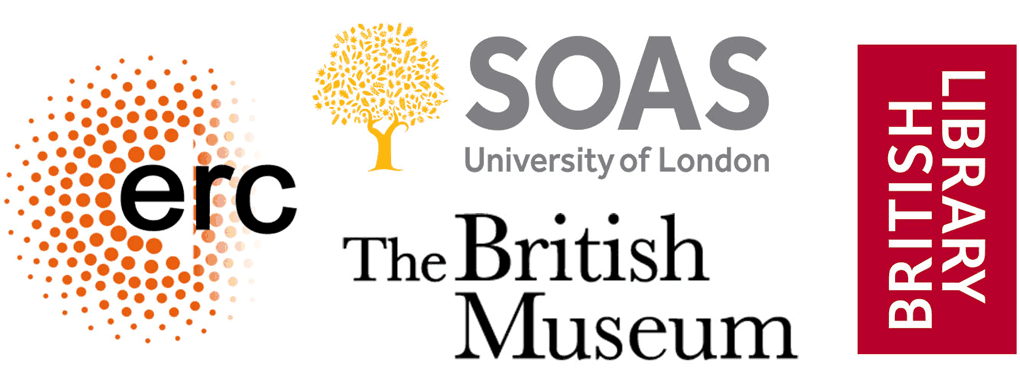General Information
The Siddham database is a resource for the study of inscriptions from South and Central Asia. It is the key output of the research project Beyond Boundaries: Religion, Region, Language and the State, a major multidisciplinary research project which aims to re-vision the history of Asia in one of its most significant periods. The project is based at the British Museum, British Library and the School of Oriental and African Studies, and funded by an ERC-Synergy grant for 2014-2020.
The project focusses on the period of the Guptas (circa 320 to 550), a pivotal moment in the history of Asia, marked by an astonishing florescence in every field of endeavour. The Gupta kingdom and its networks had an enduring impact on India and a profound reach across Central and Southeast Asia in a host of cultural, religious and socio-political spheres.
The project comprises an interdisciplinary team spanning linguistics, history, religious studies, geography, archaeology, numismatics, Indology, Sinology and GIS/IS technologies. This team will generate synergies to delineate and assess the significance of the Gupta Age and its pan-Asian impacts. The team has identified three cross-cutting themes that will allow us to offer exciting prospects for new insights into Asian civilisation.
The themes are:
1. Royal, ritual and religious centres
Against a background of long-established urban centres, the Gupta kings and their political satellites in India developed a series of political and ritual seats of power. Additionally, they established or sanctioned networks of religious institutions, many with autonomous endowments. In accord with the project aims articulated above, the PIs will ask the following questions of these sites: What can the configuration of royal sites and the geographical distribution of temples, monasteries and land-holding estates reveal about the nature, operation, duration and reach of these entities? Drawing on extant studies, is it possible to determine the ways in which Indian networks were modified or replicated in Central Asia, Sri Lanka and Southeast Asia?
2. Languages, texts and corpora
Sanskrit, Prakrit and Pali are the main source languages for early South, Central and Southeast Asia. Despite recent studies of the question, the rapid emergence of Sanskrit and its operation as the dominant language in the epigraphic, literary and ritual fields has yet to be explained satisfactorily. In consonance with the project aims set out above, the PIs will ask: How did Sanskrit, Prakrit and Pali emerge as the leading languages of political and religious discourse? Indicative keys to this problem are found in the Central Asian documents in the British Library which show Sanskrit supplanting Gandhārī in Central Asia during the 4th century. This prompts us to ask how Sanskrit came to be used across Asia beside regional languages such as Pyu, Kannada and Khotanese. A further question concerns how, and for and by whom, key scientific, literary and religious texts were composed, redacted into canons and disseminated. And finally, amplifying our goal of integrating the material and the textual, the PIs seek to ask whether palaeography and numismatics can shed light on the relationships between South, Central and Southeast Asia.
3. Network dynamics
Drawing the previous two themes together in a synthetic fashion, ‘network dynamics’ will drive the project’s synergies forward by elucidating modes of temple praxis, institutional formation, dissemination and monetisation.
The PIs will ask: How, and under whom, did temples, monastic organisations and landed estates emerge as autonomous socio-economic institutions with stable endowments, thereby possessing the resources and personnel needed to become long-standing trans-regional nodes of learning, ritual praxis and new art styles? And similarly, how do monetary systems, when recovered through the recontextualisation afforded by the project, extend our understanding of the networks of political, economic, religious and ritual power?
Partners
Project partners include the following: International Dunhuang Project (IDP) at the British Library, in London, UK South Asia Institute at SOAS, in London, UK Leiden University Institute for Area Studies (LIAS), in Leiden, The Netherlands Eötvös Loránd University Faculty of Humanities, in Budapest, Hungary The Indian Numismatic & Historical Research Foundation based in Nasik, India

Other Links
The project page on the British Museum website: Politics, ritual and religion: state formation in early India.
Sanskrit texts: Search and Retrieval of Indic Texts (SARIT).
